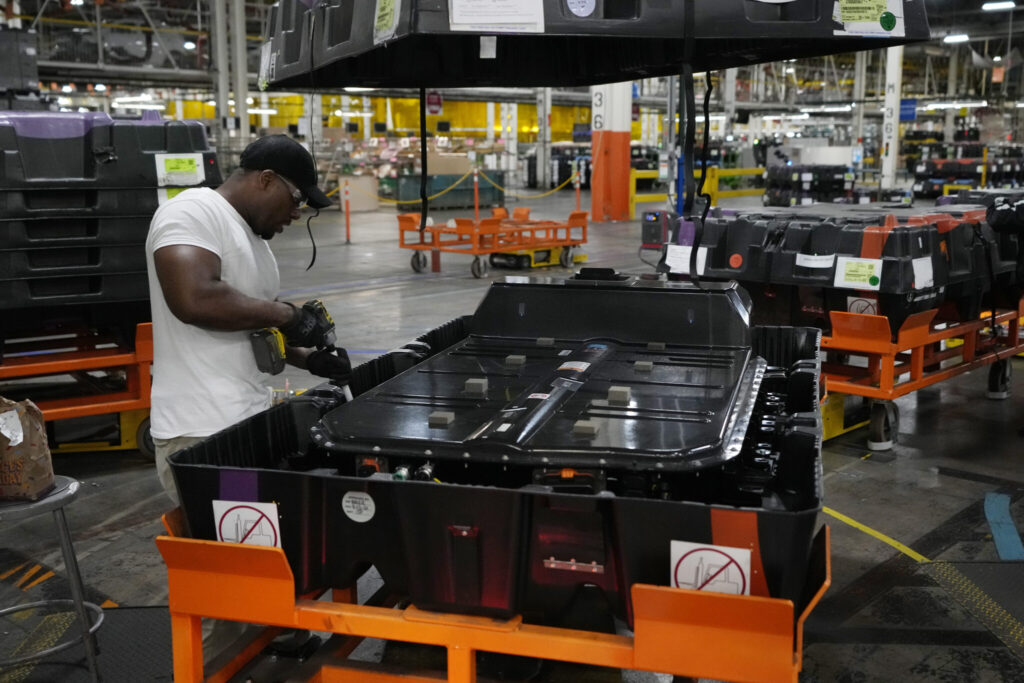The nation’s employers scaled back their hiring in October, adding a modest but still decent 150,000 jobs, a sign that the labor market remains resilient despite economic uncertainties and high interest rates that have made borrowing much costlier for companies and consumers.
Quick Read
- U.S. employers added 150,000 jobs in October, indicating a resilient labor market.
- October’s job growth decreased from September’s 297,000 but was still substantial.
- The UAW strikes at automakers may have reduced the job gains by 30,000.
- Unemployment slightly increased to 3.9% in October.
- Despite high interest rates from the Federal Reserve’s measures, the job market is stable.
- Average job addition over the past three months was a healthy 225,000 per month.
- The Fed faces decisions on interest rates amidst efforts to curb inflation.
- Consumer prices rose 3.7% year-over-year in September, down from 9.1% in June 2022.
- The U.S. economy grew at a 4.9% annual pace in the third quarter, robustly.
- Job openings were at 9.6 million in September, indicating sustained hiring interest.
- A “soft landing” is hoped for, with interest rates cooling inflation without causing a recession.
- The job market is supported by higher wages and an increase in job seekers and immigrants.
- The Fed has paused rate hikes to assess the impact, but future increases depend on economic indicators.
The Associated Press has the story:
US employers pulled back on hiring in October, adding 150K jobs
Newslooks- WASHINGTON (AP)
The nation’s employers scaled back their hiring in October, adding a modest but still decent 150,000 jobs, a sign that the labor market remains resilient despite economic uncertainties and high interest rates that have made borrowing much costlier for companies and consumers.
Last month’s job growth, though down sharply from a robust 297,000 gain in September, was solid enough to suggest that many companies still want to hire and that the economy remains sturdy.
The United Auto Workers’ strikes against Detroit’s automakers likely shrank October’s job gain by at least 30,000, economists say. The strikes ended this week with tentative settlements in which the companies granted significantly better pay and benefits to the union’s workers.
The unemployment rate rose from 3.8% to 3.9% in October.

The U.S. job market has remained on firm footing even as the Federal Reserve has raised its benchmark interest rate 11 times since March 2022 to try to slow the economy, cool hiring and tame inflation, which hit a four-decade high last year. The steady pace of hiring has helped fuel consumer spending, the primary driver of the economy. Employers have added a healthy 225,000 jobs a month over the past three months.
Friday’s jobs report from the government comes as the Fed is assessing incoming economic data to determine whether to leave its key interest rate unchanged, as it did this week, or to raise it again in its drive to curb inflation. In September, consumer prices rose 3.7% from a year earlier, down drastically from a year-over-year peak of 9.1% in June 2022 but still well above the Fed’s 2% target level.
America’s employers likely kept hiring at a healthy pace last month, defying high interest rates, rising pressure on consumers and labor strikes that idled big swaths of the nation’s auto industry.
The government’s October jobs report is expected to show Friday that companies and government agencies added 184,000 jobs, a solid showing, though down sharply from a blockbuster 336,000 gain in September. The unemployment rate is expected to stay at 3.8%, a couple of notches above a half-century low, according to a survey of forecasters by the data firm FactSet.

The U.S. job market has remained surprisingly strong even as the Federal Reserve has raised its benchmark interest rate 11 times since March 2022 to try to slow the economy, cool hiring and tame inflation, which hit a four-decade high last year.
The Fed scrutinizes the monthly job data to assess whether employers are still hiring and raising pay aggressively as a result of labor shortages. When that happens, companies typically try to pass on their higher labor costs to their customers in the form of higher prices, thereby raising inflationary pressures.
The Fed’s policymakers are trying to calibrate their key interest rate to simultaneously cool inflation, support job growth and ward off a recession.
“It’s still a very strong labor market,’’ said Nancy Vanden Houten, lead U.S. economist at Oxford Economics. “The Federal Reserve would like to see something a little less strong … We’re moving in that direction.’’
Vanden Houten expects October’s job growth to come in at 170,000, even though the United Auto Workers’ strikes against the Detroit automakers probably shrank last month’s gain by about 30,000. The auto strikes ended this week with tentative settlements in which the companies granted significantly better pay and benefits to the union’s workers.
At the same time, inflationary pressures have been easing as the Fed has sharply raised borrowing costs. U.S. consumer prices rose 3.7% in September from a year earlier, down drastically from a year-over-year peak of 9.1% in June 2022.
Wage gains, which can fuel inflation, have been slowing, too. Private workers’ average hourly earnings were up 4.2% in September from a year earlier, down from a recent peak of 5.9% in March 2022. Vanden Houten predicted that hourly wages rose 0.2% from September to October and 4% from October 2022.

Yet inflation remains well above the Fed’s 2% target, and workers’ year-over-year pay gains, Vanden Houten said, would need to fall to 3.5% to be consistent with the central bank’s inflation goal.
In the meantime, despite long-standing predictions by economists that the Fed’s ever-higher interest rates would trigger a recession, the U.S. economy, the world’s largest, remains sturdy. From July through September, the nation’s gross domestic product — the output of all goods and services — rose at a 4.9% annual pace, the fastest quarterly growth in more than two years.
And companies have remained eager to hire, though below the sizzling pace of earlier this year. In 2023, the economy has added a robust average of 260,000 jobs a month through September.
On Wednesday, the Labor Department reported that employers posted 9.6 million job openings in September, up slightly from August. Opening are down substantially from the record 12 million recorded in March 2022 but are still high by historical standards: Before 2021 and the economy’s powerful recovery from the COVID-19 recession, monthly job openings had never topped 8 million. There are now 1.4 jobs available, on average, for every unemployed American.
The combination of a durable economy and decelerating inflation has raised hopes that the Fed can nail a so-called soft landing — raising interest rates just enough to tame inflation without tipping the economy into recession.
Adding to the optimism is an influx of people into the job market, drawn by higher wages and reduced health risks from COVID-19 and the childcare struggles caused by pandemic-related school closings. Immigration has also rebounded after falling at the height of the pandemic.
Over the past year, more than 3.3 million people have either taken jobs or begun looking for one. Having more job applicants to choose from reduces pressure on companies to raise wages.
This week, the Fed’s policymakers announced that they had decided to leave their benchmark rate unchanged for a second straight time, giving themselves time to assess the cumulative effects of their previous rate hikes. Many economists say they believe the Fed is done raising rates for now.
Still, at a news conference Wednesday, Fed Chair Jerome Powell cautioned that any evidence that the economy is running too hot “or that tightness in the labor market is no longer easing” could hinder further progress on inflation and justify additional rate hikes.







